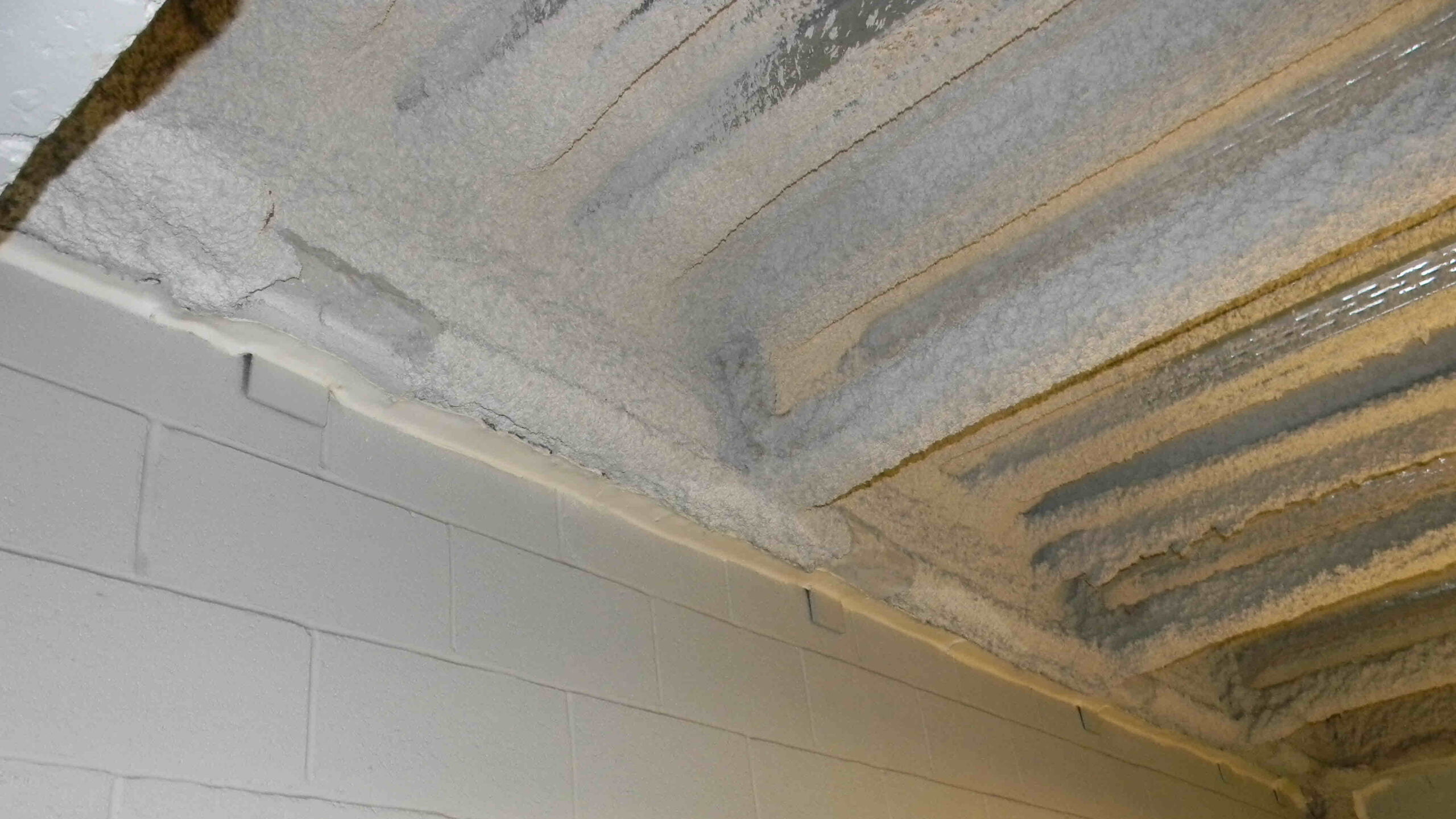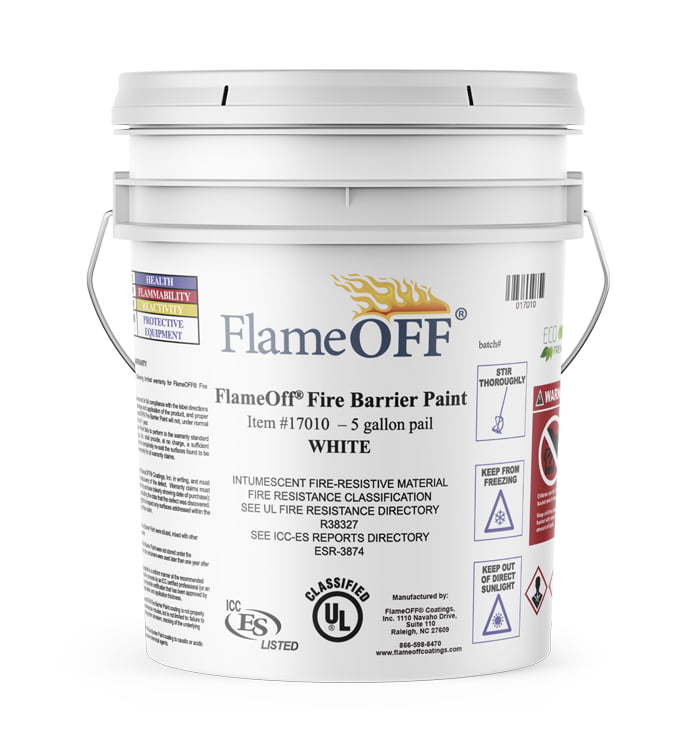
Cementitious fireproofing protects structural elements against extreme heat and fire damage. This type of passive fire protection is used in commercial buildings to ensure their integrity and the safety of their occupants during fires.
In this article, we’ll cover what cementitious fireproofing is, different types of fireproofing, ASTM E605 standards, and costs.
Table of Contents
What is cementitious fireproofing?
Cementitious fireproofing, sometimes called vermiculite fireproofing, involves applying a mixture of Portland cement and lightweight materials like vermiculite or perlite. This mix is sprayed onto structural elements like steel beams and columns to provide insulated resistance against fire damage.
This protective layer helps maintain the structural integrity of the steel.
Types of cementitious fireproofing
Cementitious fireproofing is categorized by density:
- Low-Density Fireproofing: This fireproofing consists of gypsum-based plasters and another lightweight material. It works in concealed spaces or areas with limited physical impact.
- Medium-Density Fireproofing: These materials are enhanced with additives to improve cohesion and resistance. They are suitable for semi-exposed environments.
- High-Density Fireproofing: High-density options are designed for extreme durability. They withstand significant abrasion and work well in industrial settings where mechanical damage is typical.
Density is critical because it influences the fireproofing material’s durability and insulative properties. High-density cementitious fireproofing is best for maintaining the integrity of structures that need to meet a particular fire rating (e.g. ASTM E-119 or UL 263).
Alternatives to cementitious fireproofing
The best alternative to cementitious fireproofing is an intumescent paint or fire resistant coating. Intumescent paints offer better aesthetics, smoother coats, and lightweight formulas.
Depending on your project, you might need a mix of both cementitious fireproofing and intumescent paints. That’s why we recommend FlameOFF Fire Barrier Paint.
Best Intumescent Paint
How are ASTM E605 standards relevant to fireproofing?
As we mentioned above, density is an important part of assessing the quality of cementitious coatings. That’s where ASTM E605 comes in.
The ASTM E605 is a standardized test method used to quantify the density of spray-applied fire-resistive materials (SFRMs), specifically materials that are essential for ensuring the fire safety of structural components like steel beams, columns, and floor assemblies.
To perform the ASTM E605 test, workers apply a representative sample of the SFRM to a predefined area at a known thickness. Technicians then cut a cylindrical piece out of the material. The sample is weighed, and its volume is established by measuring the height and diameter of the cylinder. The density is then determined by dividing the weight by the volume. Precise measurements are essential since the ability of the SFRM to protect structural elements during a fire depends on achieving the minimum density specified by the product’s listing.
After calculating the SFRM’s density, it’s compared against the required density specified in building codes or the material’s technical data sheets. By using the ASTM E605 procedure, professionals can determine that the SFRMs utilized in construction are adequate and compliant with the relevant codes.
Regular checks using methods like ASTM E605 are necessary to maintain safety standards in the construction industry when using fire-resistive materials.
What is the cost of cementitious fireproofing?
The cost of cementitious fireproofing will vary depending on several factors, including materials, labor, project size, and regional market rates.
The material cost for cementitious fireproofing might range between $2.00 and $4.00 per square foot. Labor costs can vary significantly but could add $3.00 to $10.00 per square foot. Therefore, the complete installation cost can range from approximately $5.00 to $14.00 per square foot.
Remember, passive fire protection systems often require a specific thickness and density, which can depend on the size and shape of the steel. Increasing the steel size might reduce costs, with the added expense of more extensive steel typically offset by reducing the need for fireproofing materials and labor.
Cementitious fireproofing vs. intumescent fireproofing
Intumescent fireproofing is an alternative to the cementitious coatings we’ve been discussing.
Cementitious fireproofing involves the application of a thick, plaster-like mixture of cement or gypsum that serves as a passive protection layer. In contrast, intumescent coatings typically consist of a paint-like material that reacts to high temperatures. These coatings expand when exposed to heat, forming an insulating char that protects the underlying substrate.
| Consideration | Cementitious Coatings | Intumescent Paints |
| Cost | $$ | $$$ |
| Aesthetic | Bulky and Rough | Thin and Smooth |
| Weight | Heavy | Light |
| Composition | Cement-based | Water-based or solvent-based |
| Ease of application | Labor-intensive | Less intensive |
Intumescent coatings are often preferred for aesthetic reasons as they can be applied much thinner than cementitious coatings, and you can paint over them to maintain the architectural design. But cementitious fireproofing is often more affordable and easier to apply.
Both fireproofing methods increase the fire resistance rating of structural elements, but their differences lie in aesthetics, composition, weight, application, and performance.
You should consult a coatings consultant or expert before making a decision for your facility or new building. A fireproofing expert can help you navigate the many different fireproofing solutions available on the market.
